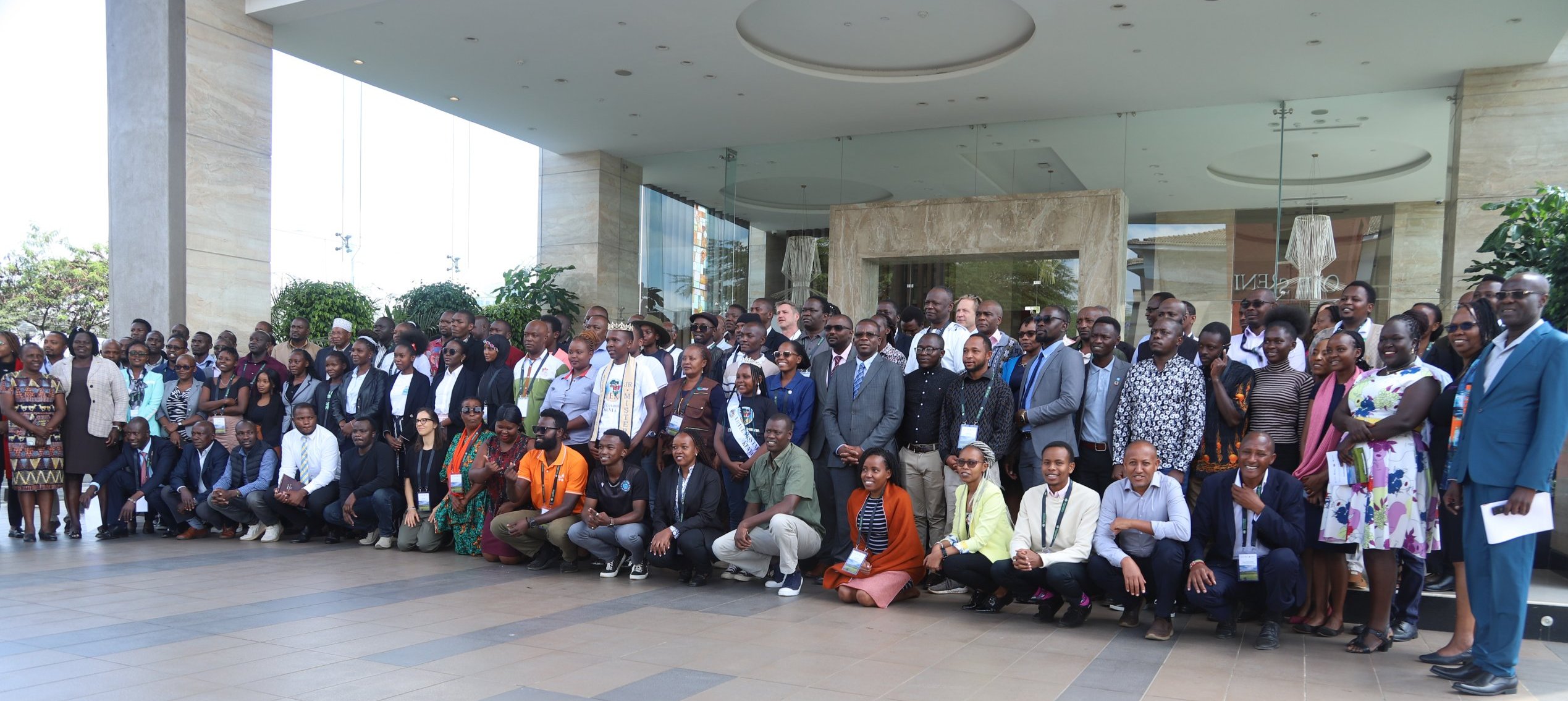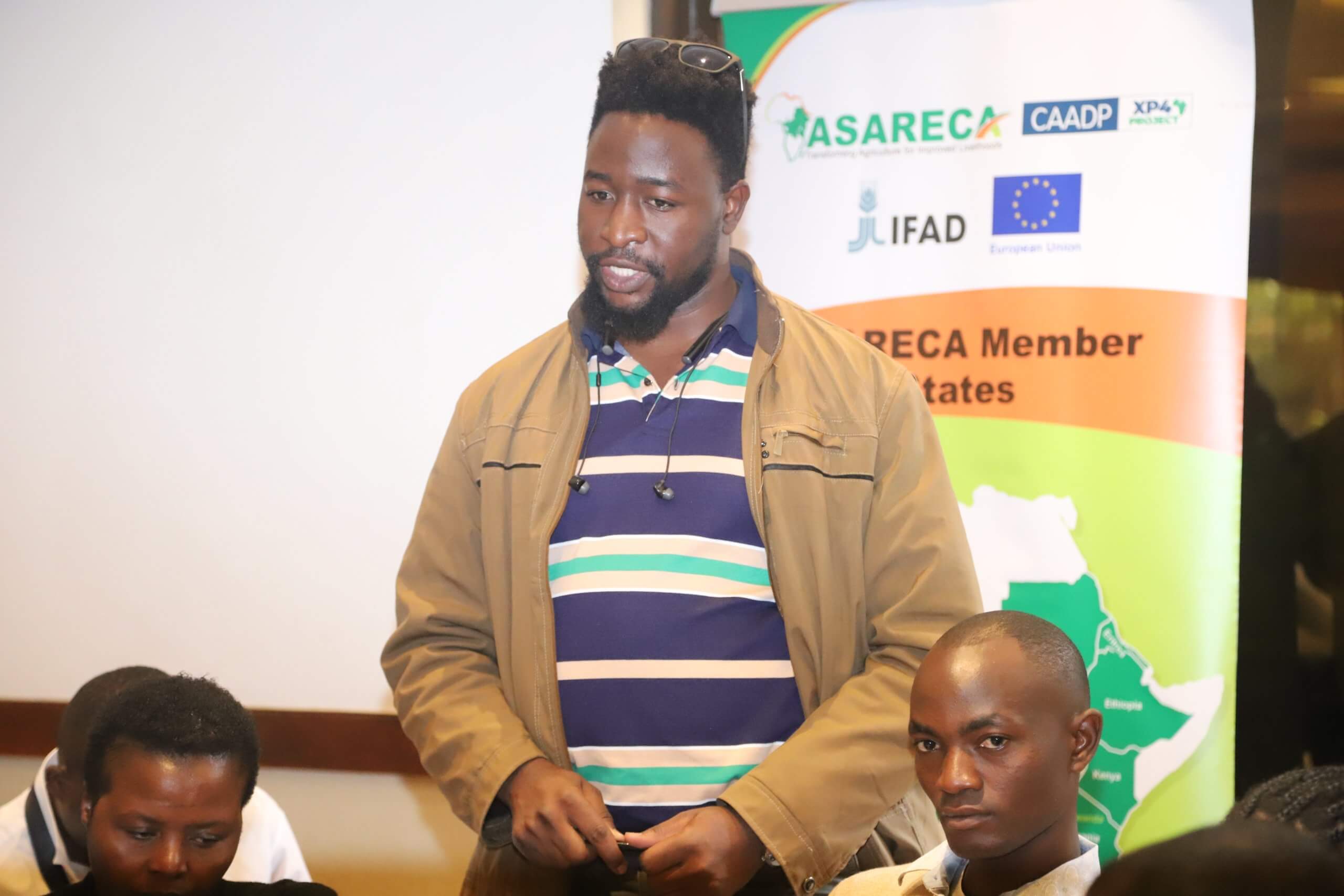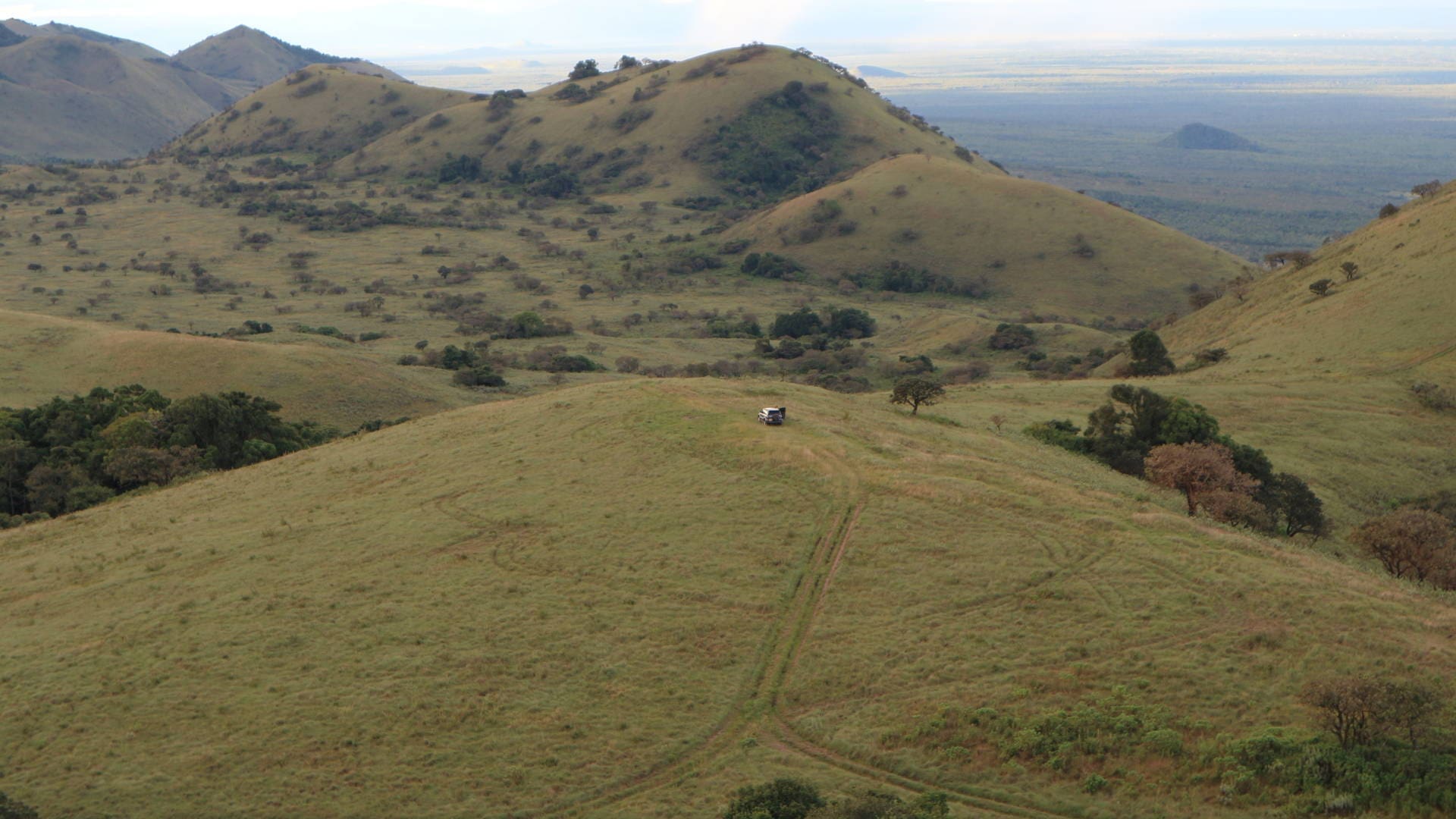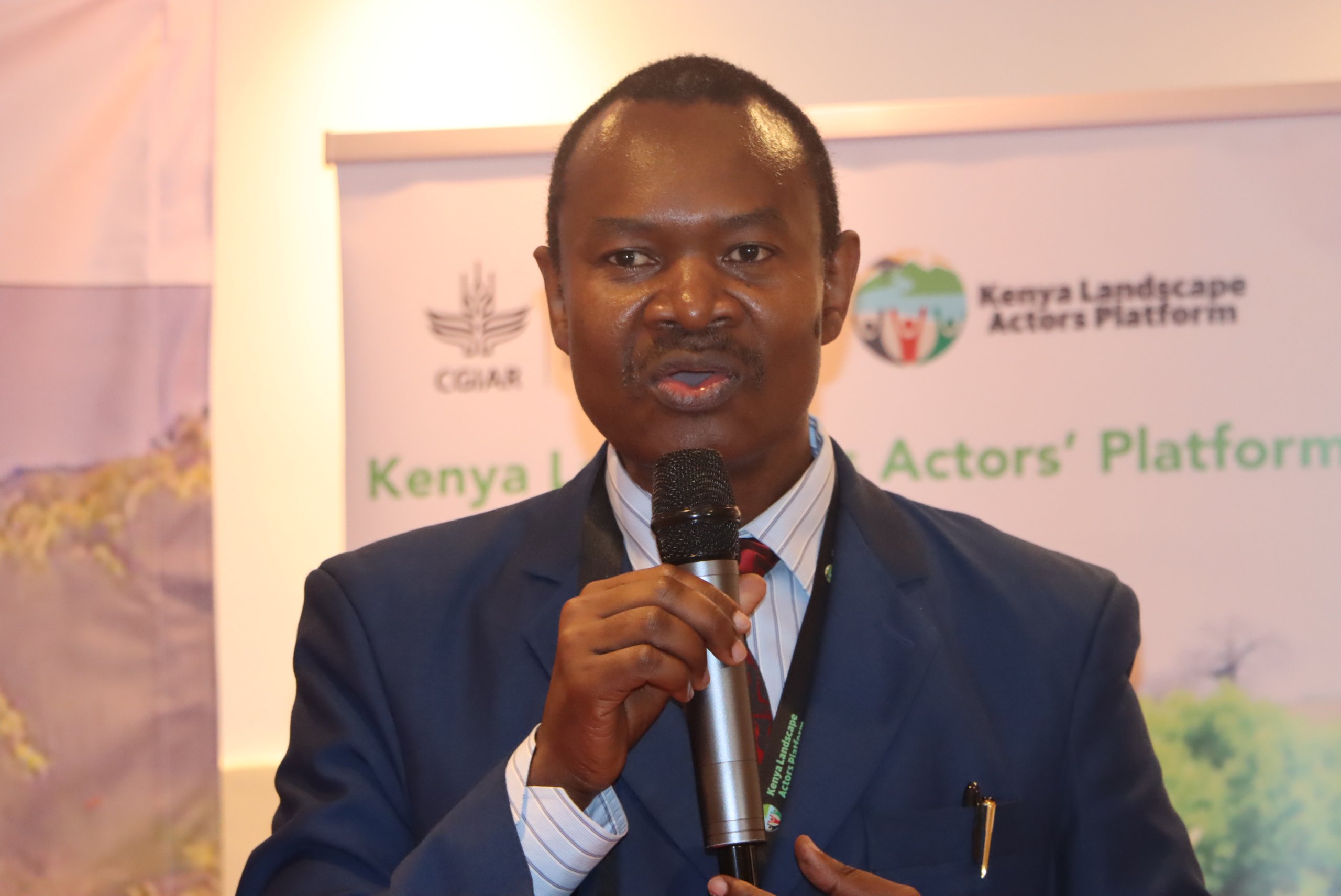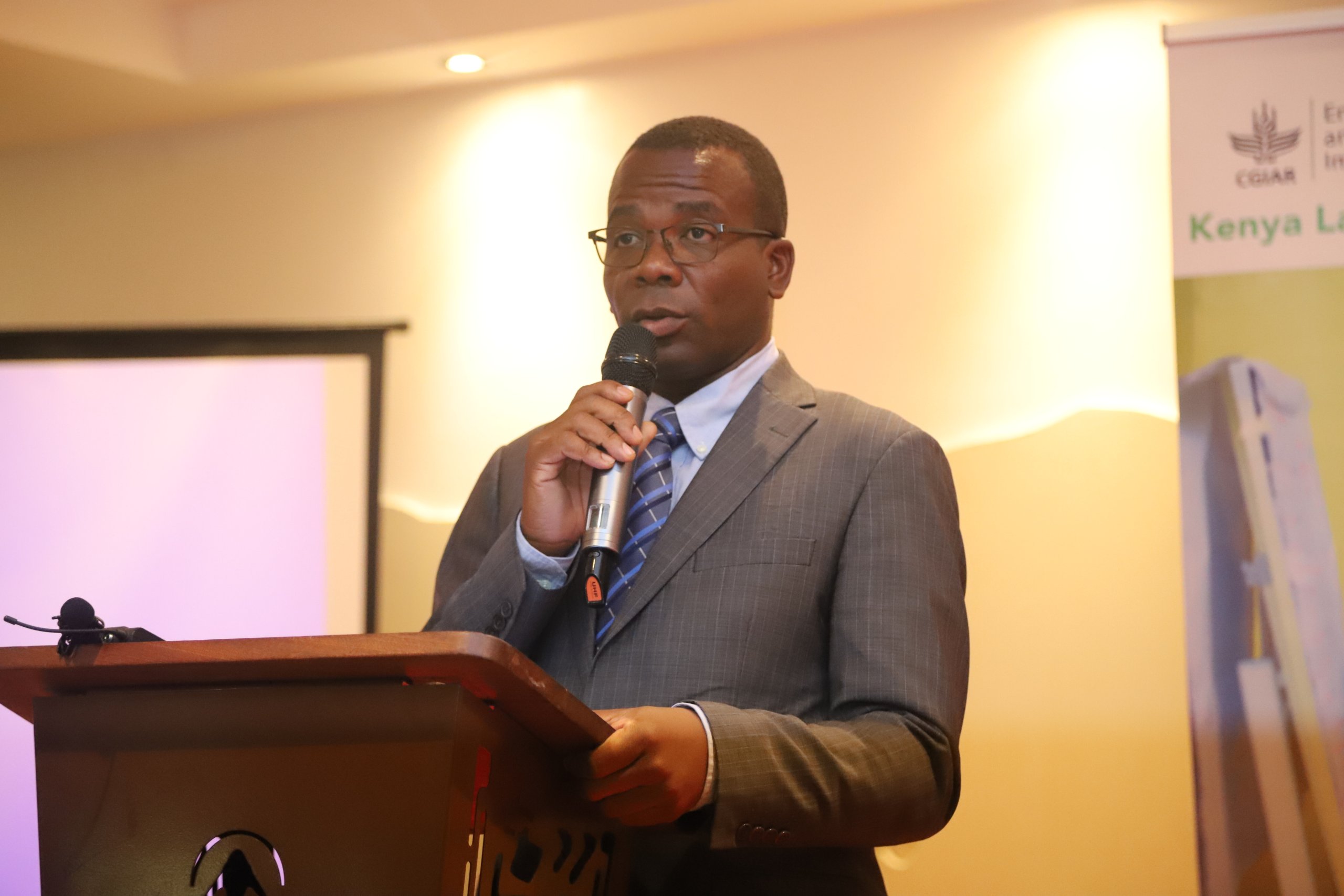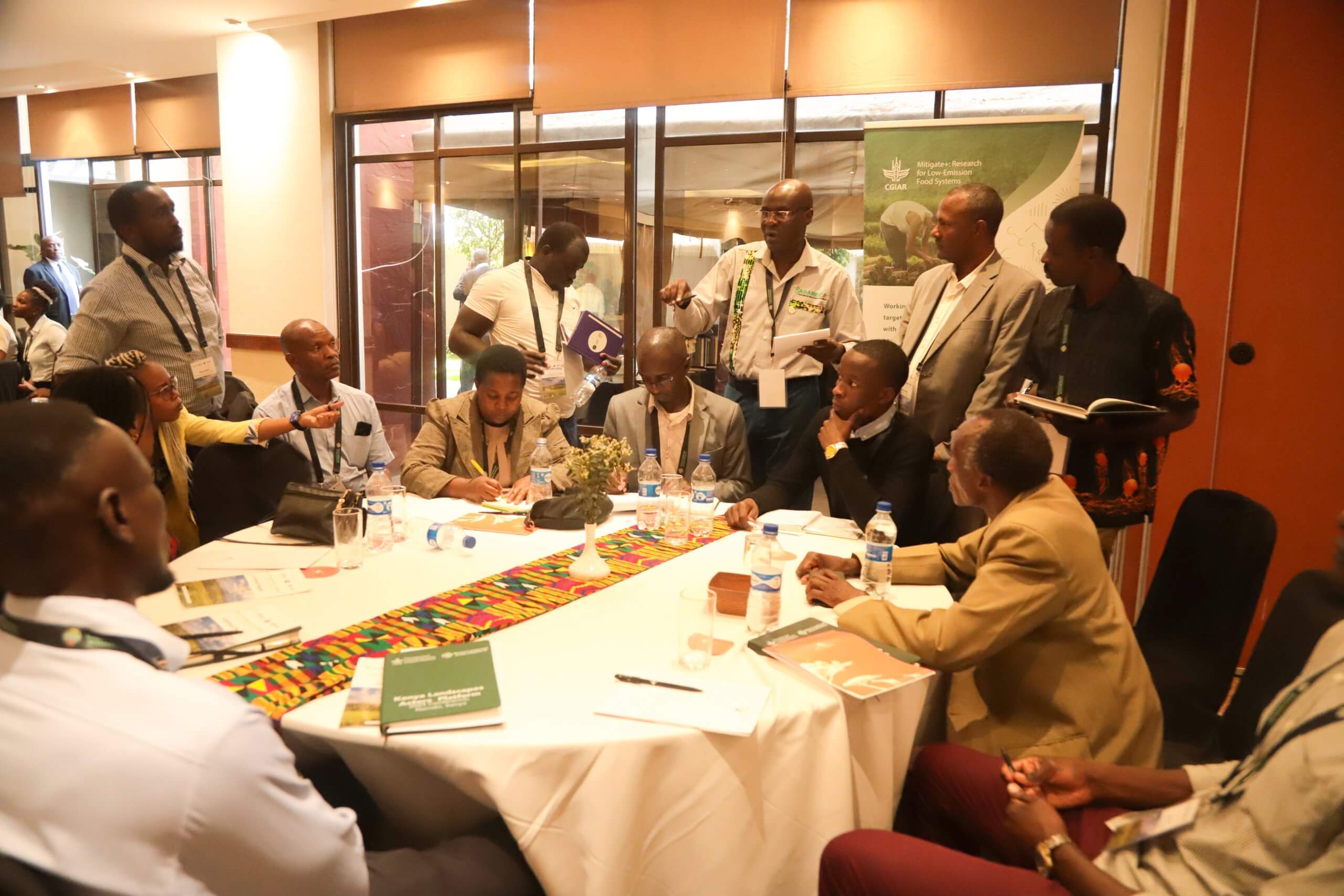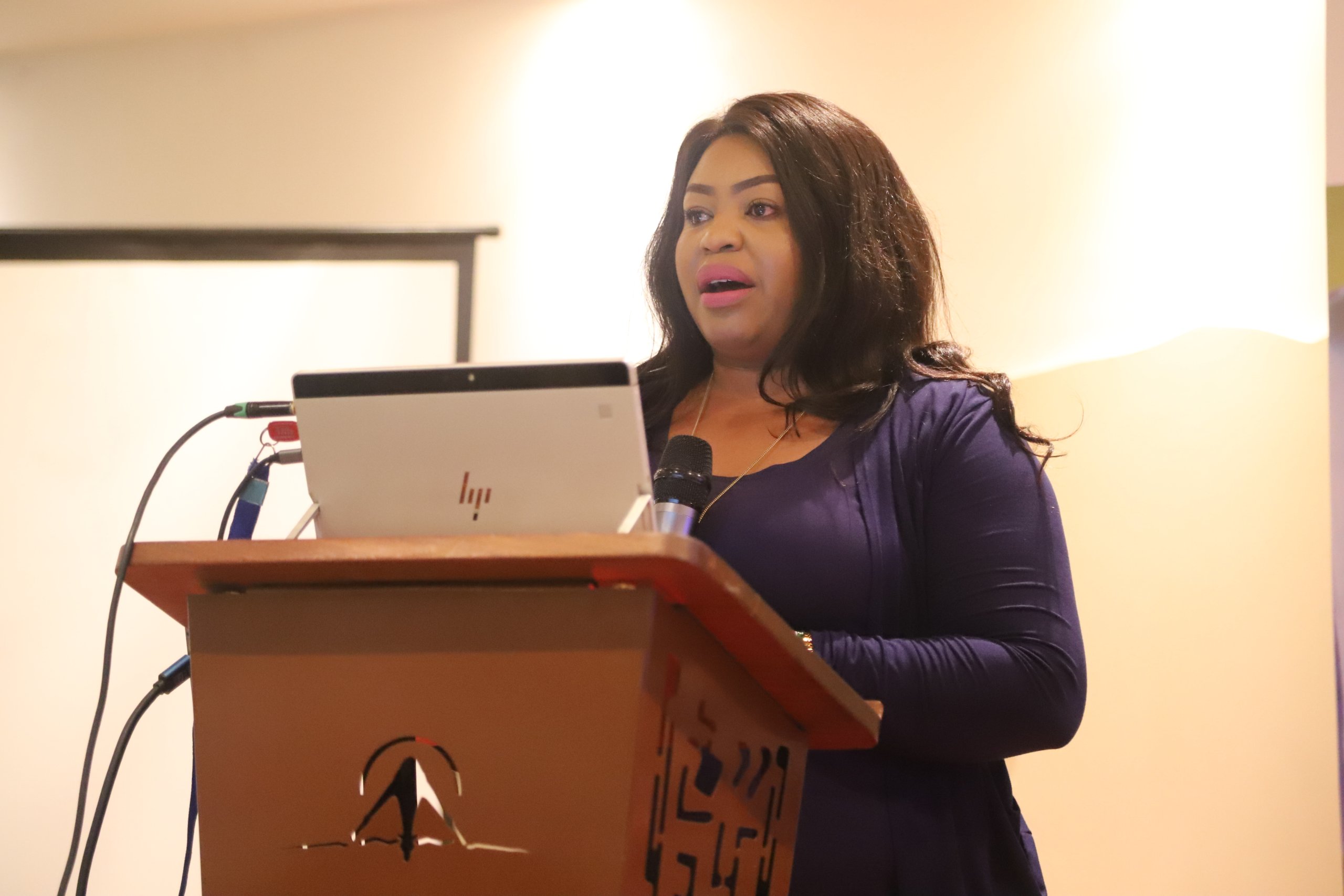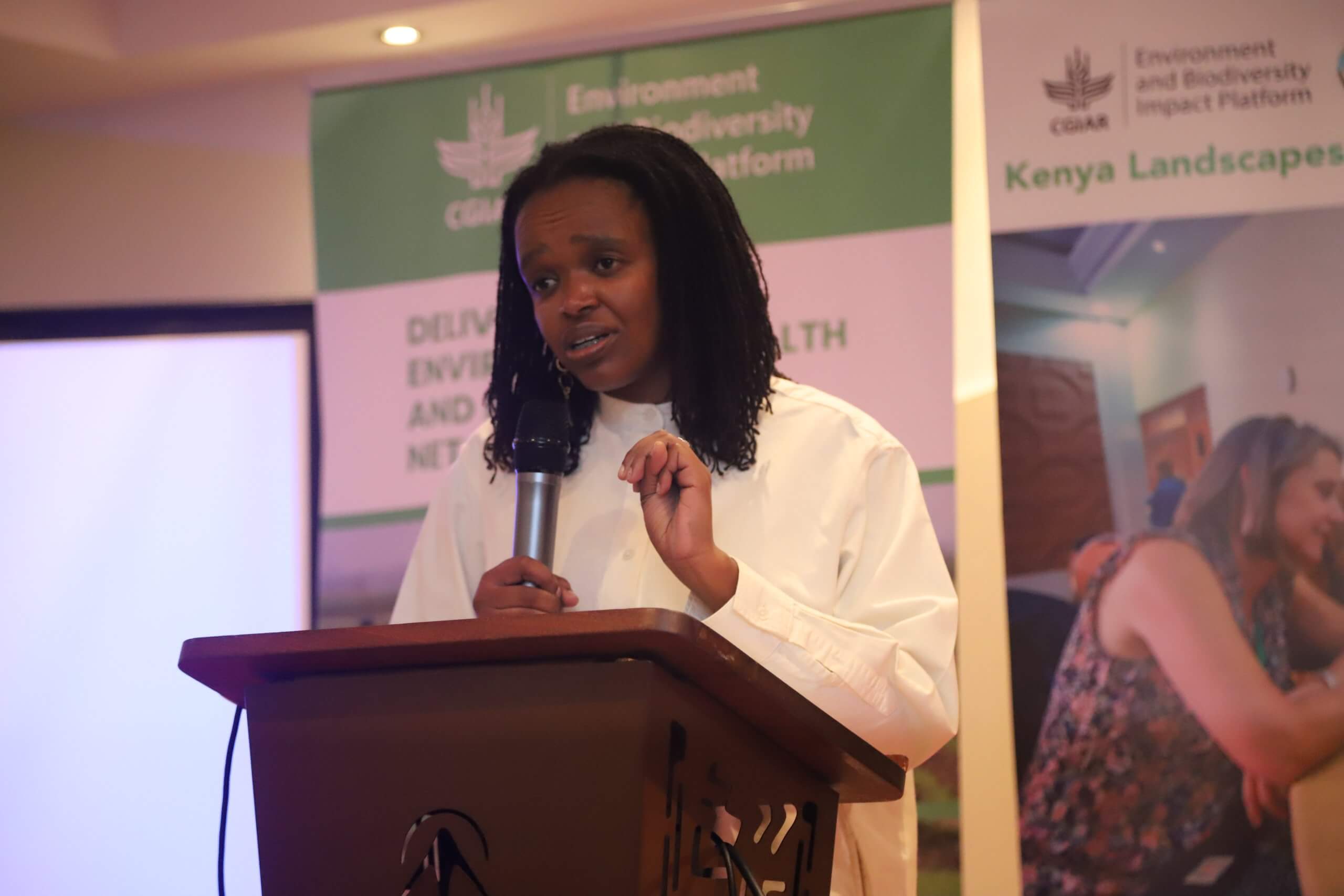Call to Action: CGIAR & ASARECA take steps to propel African governments’ efforts to restore and optimize benefits from landscapes
By Ben Moses Ilakut
NAIROBI, KENYA: Over 200 participants (https://www.youtube.com/watch?v=qZ3SI3DYON8) attending the Kenya Landscape Actors Platform (https://www.kenyalandscapes.com/) Conference (https://youtu.be/K5DlPc3bc0E?si=2WvXyhJk9FH4KCKk) have called for fast tracking of several policies and actions aimed at optimizing benefits from diverse Kenyan and Eastern and Central African landscapes including farmlands, forests, rangelands, water bodies, mountains, and hills.
The participants, including farmers, leaders of various landscapes, community-based organizations, local and international Non-Governmental Organizations, civil society, agribusiness and farmersorganizations, national and county-level government officials actively involved in landscape management initiatives, the academia, and researchers from national, regional and continental levelorganizations, want fast action in: scaling of agro-ecological practices, especially through integrated soil fertility management and integrated landscape management; implementation of appropriate policies on land ownership and sustainable land use especially under the current challenges of climate change and climate variability
Convergence of priorities
Voicing their successes, challenges, and opportunities during an interactive conferenceconference of multiple actors in the Kenyan Capital, Nairobi from November 4th to 7th, 2024, the participants mainly from a cross-section of the Kenyan counties, overwhelmingly converged on priorities for action spanning integration of water resource management within integrated landscape approaches; engagement of manufacturers to support management of waste and pollution; ensuring people and nature thrive together by introducing alternative practices like bee keeping, efficient charcoal briquets, and herbal collection to reduce cutting down of trees.
Including marginalized groups
They also want to see enhanced advocacy for increased climate funding, proactive development and implementation of programmes and policies on sustainable cattle grazing such as establishment of grass banks to reduce constant movement of livestock in search of grass and water; more inclusive engagement of women and youth through value addition chains; more involvement of indigenous communities in landscape initiatives including research; coordinated monitoring of prioritized initiatives; co-creation of knowledge to keep pace with the times; strengthening capacities of users and advocates for landscape restoration; enhancing Public Private Partnerships; balancing the needs of the communities, conservation and national development goals; and regular harmonized review of the progress in which policies are being implemented.
What are landscapes?
Landscapes refer to various natural physical features in which humans and other existing creatures live and work together through integrated and complementary socio ecological systems. Integrated landscape management refers to a process of fostering co-created sustainability and resilience in landscapes through adaptive inclusive processes and systems.
The anchor sectors in Kenyan landscapes include agri-food, mining, wildlife, water, energy, health, land, forestry and environment, finance, and industry, trade, and infrastructure. The areas of focus in the Kenyan landscapes include food systems and livelihoods, the climate change issues and landscape restoration.
Meeting at the game reserve
The weeklong conference was put together as a collaborative learning dialogue through peer-to-peer exchanges. The interactions and messaging of the conference was set in context through strategic choice of the venue, the iconic Ole Sereni Hotel (https://ole-sereni.com/) in Nairobi, Kenya, overseeing the Nairobi National Park (https://www.kws.go.ke/nairobi-national-park) , which is home to the big five (lions, leopards, rhinos, and cape buffaloes), giraffes, zebras, wildebeests, waterbucks, bushbucks, spotted hyenas, black-backed jackals, antelopes, and various tribes of birds.
Empowering communities for restoration
According to Dr. John Recha, aScientist in Climate Smart Agriculture at the International Livestock Research Institute (https://www.ilri.org/), who was one toe lead convenors of the conference, the event aimed at bringing together landscape actors across Kenya and the eastern Africaregion for productive and resilient landscapes by sharing knowledge to secure food security, biodiversity conservation, equitable livelihoods, and sustainable investments.
“This is will ultimately accelerate the scaling up of climate smart integrated landscape management practices and technologies contributing to a more sustainable food secure future for Kenyan landscapes.
Partnerships for healthy landscapes
The conference was put together by multiple actors including the Land, Soil and Crop Information Services to support Climate-Smart Agriculture (https://www.isric.org/projects/land-soil-and-crop-information-services-lsc-support-climate-smart-agriculture-desira), CGIAR Environmental Health and Biodiversity Impact Area (https://www.cgiar.org/research/cgiar-portfolio/environmental-health-biodiversity/), CGIAR Impact Area on Climate adaptation and mitigation (https://www.cgiar.org/research/cgiar-portfolio/climate-adaptation-mitigation/), the CGIAR Low-Emission Food Systems Initiative (https://www.cgiar.org/initiative/low-emission-food-systems/), CGIAR Multifunctional Landscapes (https://alliancebioversityciat.org/research-themes/multifunctional-landscapes), the Accelerating Impacts of CGIAR Climate Research for Africa (https://aiccra.cgiar.org/), 1000 Landscapes for 1 Billion People (https://landscapes.global/), EcoAgriculture Partners (https://ecoagriculture.org/), the Rockefeller Foundation (https://www.rockefellerfoundation.org/), Sustainable Agriculture and Natural Resources Management Africa (https://sanremafrica.org/), Vi Agroforestry (https://viagroforestry.org/), the Center for International Forestry Research and World Agroforestry (https://www.cifor-icraf.org/), the Rainforest Alliance (https://www.rainforest-alliance.org/), the World Wide Fund for Nature (https://www.worldwildlife.org/), the World Resources Institute (https://www.wri.org/), the SNV Netherlands Development Organisation (https://www.snv.org/), the International Union for Conservation of Nature (https://iucn.org/), CABI (https://www.cabi.org/), Conservation International (https://www.conservation.org/), and the Association for Strengthening Agricultural Research in Eastern and Central Africa (https://www.asareca.org/).
Diversity and livelihoods
In a keynote speech, the Director of the National Agricultural Research Laboratories and Chief Research Scientist of the Kenya Agricultural and Livestock Research Organization, Dr. Michael Okoti, described the diversity and inter-connected economic, social, cultural, natural, health, and aesthetic benefits from landscapes resources in contributing to improved livelihoods ((https://www.youtube.com/watch?v=dBL3jxwNb3Y)
“In 2023, Kenya earned KES 352.5 billion (USD 2.7 billion) from tourism, KES 526 billion (USD 4.1 billion) from Agriculture. The Kenyan mangroves (60,000 ha) have an estimated value of 270,000 KES/Ha/year (USD 2,100). Total Economic Value for Mau, Cherangany and Mt. Elgon ecosystems at KES 350 billion/year (USD 2.6 billion) – providing (timber & non-timber, food production, water),” he explained.
Dr. Okoti, however, decried numerous challenges undermining conservation and development of landscapes including unsustainable land use practices with Kenya losing up losing 12,000 hectares of forest annually; poor land tenure; inadequate financing of landscape management; poor implementation of landscape management policies, limited human and technical capacity for conservation, limited monitoring and reporting of intervention impacts and biodiversity loss; and uncoordinated interventions (https://www.youtube.com/watch?v=pdJ1-21MzBk).
Conference approach
The conference featured knowledge sharing sessions where landscape leaders and representatives from local and regional initiatives shared experiences and case studies offering valuable insights into effective approaches for specific contexts.
Renowned researchers presented the latest findings on landscape management and forest landscape restoration hence stimulating discussions on how to translate scientific knowledge into practical applications within their landscapes. Participants also visited the Lari Landscape where they interacted with real-world challenges and successful strategies for landscape management.
Conference highlights
Besides the official and keynote statements, perspectives were received from multiple organizations engaged in landscape management. Some of the highlights are presented below:
Alliance Bioversity and CIAT
The Alliance of Bioversity International and CIAT is part of CGIAR institutions working on complementary thematic areas including food, environment and consumer behavior, multifunctional landscapes, climate action; agroforestry; digital inclusion; crop improvement; gender inclusion; and foresight and economic impact in 14 countries of Burkina Faso, Burundi, Cameroon, Cote d’Ivoire, DRC, Ethiopia, Ghana, Uganda, Kenya, Madagascar, Morocco, Sao Tome, Seychelles, and Tunisia. During the conference, the Alliance showcased successful interventions including development of national formal and informal seed systems fit for purpose, integration of biodiversity into restoration planning and implementation, maximizing benefits from restoration, and contributing to national monitoring and restoration targets.
Kenya Water Towers Agency
The Kenya Water Towers Agency co-ordinates and oversees the protection, rehabilitation, conservation, and sustainable management of water towers; recovery and restoration of forest lands, wetlands, and biodiversity hot spots; promotes the implementation of sustainable livelihood programmes in the water towers; and identifies water towers and watersheds for protection; assess and monitors rehabilitation, conservation, and management activities in the water towers. According to the Executive Director, Mr. Richard Krop, to date the Authority has initiatives 18 Gazetted Water Towers in Kenya in Mount Elgon, Cherangany Hills, Aberdares Range, Mau Forest Complex, Mount Kenya where 185 Water Towers, which are a source of more than 75% of surface water resources have been placed under management. Some of the interventions currently in place include: Protection, Restoration and Conservation of Water Tower through fencing, surveillance; rehabilitation of degraded areas within Water Towers; dissemination of sustainable land management practices; community livelihood interventions through implementation of nature based solutions; and implementation of climate change adaptation projects such as green energy interventions among others.
WWF
In Kenya, WWF supports the Ministry of Environment, Climate change and Forestry and Kenya Forest Service (KFS) in development of policies at national and county level for sustainable forest management; development, operationalization and monitoring of strategic plans for forestry development; and works with targeted stakeholders to promote tree production for specific needs; supporting landscape restoration (https://www.youtube.com/watch?v=cncR5GKct90) According to Mr. Elijah Korir, National Forest Programme Coordinator for WWF has strengthened capacities of institutions involved in forest management; supported to implementation of forest policies and legislation; promoted of good forest management practices and alternative livelihood activities to reduce pressure on the forest resources.
The Rainforest Alliance
The Rainforest Alliance Director, Marion Nyanga highlighted the role the Alliance in playing to fight deforestation and climate change to building economic opportunities and better working conditions for rural people. “Over the last 20 years, we invested US$360 million in programs to improve livelihoods and protect nature.
In 2023 alone, we actively delivered 109 projects around the world,” she noted. Among other things, the Alliance is helping farmers and workers move from harmful and degrading practices to sustainable and regenerative ones; supporting stakeholders to co-create positive impacts for people and nature; provide markets and stakeholders with credible evidence and verified data, provide support, training, and promote conservation, supporting implementation of sustainable practices according to the social, economic, and environmental requirements.
World Resources Institute
The World Resources Institute (WRI) focuses on six critical goals that the world must achieve this decade to secure a sustainable future. These include climate, energy, food, forests, water and cities. According to the Landscape Manager, Caroline Njiru, the key WRI action areas include making credible data and tools available, building collaborative, multi-stakeholder plans for landscape-level impacts; investing in targeted restoration action and building market incentives; ensuring policy shift to incentivize targeted, high-quality, locally led restoration; co-creating outcome-based financial mechanisms among others.
Intersectoral Forum on Agrobiodiversity and Agroecology (ISFAA)
The Intersectoral Forum on Agrobiodiversity and Agroecology (ISFAA) is a multistakeholder and multi-sectoral platform bringing together 500 stakeholders including government, farmer organizations, civil society organizations, private sector, research and academia, and the donor community to discuss sustainable solutions to the bottlenecks and challenges facing food systems. According ISFAA official, Mr. Antony K’Owiti, the Forum focuses on the conservation of agrobiodiversity through agroecology to address the challenges of conventional agriculture to transition food systems to sustainable food and nutrition security; linking policymakers, researchers, practitioners, and end-users in agrobiodiversity and agroecology; and creating awareness on the importance of biodiversity to agricultural production. To date, ISFAA has coordinated development of the National Agroecology Strategy for Food System Transformation 2024-2033 which will be launched in November 2024. The organization is also working with the Kenyan Ministry of Agriculture and Livestock Development to development of the Seeds and Plant Varieties (Conservation, Access and Benefit Sharing) of Plant Genetic Resources for Food and Agriculture, Regulation 2023).
Team Environment, Kenya
TEAM Environment Kenya is a socio-economic and environmental Organization of 680 members comprising youth and women groups and organizations, public and private enterprises, community-based organizations, institutions of higher learning, community volunteers working together to green landscapes and a means of reversing the devastating effects of global warming and climate change. According to Mr. Mathew Ochanda, the Executive Director, the group is undertaking reforestation with a target to plant at least,10 million tress to complement the Kenyan Governments ambitious afforestation goals of 15billion trees by 3032; waste management through the 3R program—reduce, reuse, and recycle effectively; agroforestry, and establishing, tree nurseries and seedlings propagation centres to support nationwide reforestation efforts.
Corridor REDD+ Project
Founded in 1997 to change the model of conservation from a colonial-era fortress model where people are seen as apart from nature to a community-centered model where people are leading solutions as part of nature. The organization aims to bring market-based solutions to conservation of biodiversity by providing benefits to rural communities. Through the initiative, jobs have been provided to communities in dealing with the effects of human-elephant crop raiding for the predominantly agriculture community. At the same time, the aerial and ground team assist in human-elephant conflict mitigation, preventing elephants from accessing the farms and improving their habitat. The initiative is also engaged in alternative energy production through eco-charcoal production. To date its activities have led to protection of 200,000ha of dryland forest under the REDD+ mechanism. With a total of 250 projects on water use, education, and health, the initiative has led to health and financial and livelihood alternatives, created bursaries for over 30,000 students, and created over 400 jobs.
Rockefeller Foundation
The Foundation is a committed development partner to may initiatives on landscapes. The Foundation has supported the CGIAR in several initiatives in countries of intervention. The foundation is also involved in school feeding programmes in Tanzania and Kenya by ensuring governments make a commitment for school feeding as part of the complementary requisite for development support. At the core of the feeding programme ensuring that food is nutritious.
Agriculture, the good and the bad
While Agriculture is the basic source of livelihoods the world over, it is the biggest driver of forest and biodiversity loss, including of diversity crucial to healthy diets and nutrition. A third of the world’s soils are degraded, and agriculture accounts for about 70% of global freshwater withdrawals.

A healthy natural environment and biodiversity are critical for the long-term sustainability of food systems, and human health. Maintaining the genetic diversity of seeds, cultivated plants, and farmed and domesticated animals and their related wild species, including through soundly managed gene banks at the national, regional, and international levels is critical for the future of agriculture.

